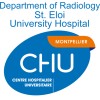
Prolonged Cardiopulmonary Bypass Time as Predictive Factor for in Hospital Infection
Bloodstream Infection (BSI)This study is to analyse the demographics and microbiological factors concerning patients undergoing cardio surgical intervention using CPB complicated with bloodstream infection (BSI) postoperatively.

Antibiotic Profile of Pathogenic Bacteria Isolated in Public Hospitals in Northern Jordan
Bacterial InfectionsAntibiotic Resistant Infection1 moreThe main aim of the study was to identify the various pathogens associated with surgical site infections and their antibiotic susceptibility in a governmental hospital in northern Jordan.

HIV Resilience Qualitative Study Hong Kong
HIV InfectionsElderly InfectionThis qualitative study aims to explore lived experiences of older adults living with HIV in Hong Kong. Twenty older Chinese adults of age 50 or above will be recruited from an HIV specialist clinic providing HIV care in the public service. Qualitative, semi-structured interview will be conducted to explore risk factors contributing to life stress and adversity, and protective factors associated with resilience. The qualitative data will be delineated to propose a typology of older adults living with HIV as characterized by their unmet needs, barriers and facilitators of resilience-building.

Severity of RSV Infections in Twins
RSV InfectionBronchiolitisRespiratory syncytial virus (RSV) infection is the most common cause of severe lower respiratory tract infection (LRTI) in the pediatric population worldwide. Age at the time of infection, prematurity, multiparity, exposure to smoke and the level of passive immunity transmitted at birth are the main risk factors for lower respiratory infection associated with RSV. Other factors, including the innate immune response, respiratory microbiota, and intra-host viral heterogeneity, may also affect outcomes but are not fully considered in RSV infection. Exploring the impact of these factors is difficult due to the heterogeneity of the population which makes statistical adjustment difficult. Thus, twin models are useful in understanding the impact of the host on the environment, as twins often share similar exposure to infection and many risk factors, but not all are ie different prenatal and postnatal conditions, differential transfer of maternal antibodies and the genetic makeup of heterozygotes.

Retrospective Evaluation of Clinical, Virological and Serological Data in Patients With Mild Acute...
Acute Upper Respiratory Tract InfectionRetrospective analysis with subgroup evaluation Primary objectives of the data analysis study: 1 Retrospective analysis of the symptoms and quality of life data of patients with mild, acute (<96 hours) upper respiratory symptoms based on the results of standard health assessment questionnaires used at the institution, over a period of 10-15 days after the SARS CoV-2 PCR test. Secondary objectives 1 Retrospective assessment of the upper respiratory tract symptoms and quality of life and serological parameters of the contact persons with confirmed close exposure to SARS CoV-2 PCR positive patients (based on the results of the standard health assessment questionnaires used at the institution in the period of 10-15 days after the SARS CoV-2 PCR test) The retrospective analysis also includes an assessment of the pharmacological and supplementary therapies used in patients presenting with mild, acute (<96 hours) upper respiratory symptoms and SARS CoV-2 positive contacts, as well as the incidence of SARS CoV-2 virus infection in contacts confirmed by PCR test (based on values measured within 48 hours and 10-15 days later), and an analysis of patients' serological data.

Access HIV Ag/Ab Combo Assay - European Union (EU) Clinical Trial Protocol
HIV I InfectionHIV-2 InfectionThe objective of this study is the collection and testing of clinical samples to determine the clinical performance of the Access HIV Ag/Ab Combo assay on the DxI 9000 Access Immunoassay Analyzer

Does Hirschsprung Disease Increase the Risk of Febrile Urinary Tract Infection in Children
Hirschsprung DiseaseFebrile Urinary Tract Infection (Disorder)Febrile urinary tract infection (FUTIs) are the most common bacterial infections in children under the age of 2 years. They represent 7% of children presenting with fever without a source. In case of recurrent or undertreated FUTIs there is a risk for kidney function with the threat of chronic renal failure [7]. They are more often isolated but some FUTIs may reveal an underlying and facilitating condition. Beside the well-known congenital anomalies of the kidneys and urinary tract such as reflux or obstructions, others risk factors for FUTI are reported. Age less than 1 year, uncircumcised males, poor fluid intake, bladder bowel dysfunction (BBD) including dysfunctional voiding pattern and constipation increase the risk of FUTI. The prevalence of BBD in children with FUTIs is far higher than in the general population. Recommendations emphasize on an efficient treatment of BBD in the first-line management of recurring FUTIs and it has been proven to be efficient (ref). One of the BBD may include Hirschsprung's Disease (HD). HD is the first congenital malformation of the enteric nervous system with a reported prevalence of 1 in 5000 live birth. It's characterized by an aganglionosis and subsequent dysmotility affect by always the anal canal, most commonly there is a rectosigmoid form (74-80%), and less commonly involves a long segment of colon (12-22%) or a total colonic aganglionosis with ileal involvement upto 50 cm proximal to ileocecal junction (4-13%). The treatment is based on the resection of dysfunctional segment of colon with an anastomosis between the normally innervated bowel to the anus, while preserving normal sphincter function. But significant bowel dysfunction may persist postoperatively. 20% of the children present a fecal incontinence, and 14% a constipation in long-term studies. Bladder dysfunction and associated urological anomalies are also reported in these patients. All of that may facilitate the occurrence of febrile urinary tract infections (FUTI) in patients with HD. Unfortunately, few studies focused on this specific population. The objective of this study was to find out whether children with HD are more prone to develop FUTIs than controls and which patient with HD are more at risk to develop UTIs.

Efficacy of Antibiotic Short Course for Bloodstream Infections in Acute Myeloid Leukemia Patients...
Bloodstream InfectionAcute Myeloid Leukemia1 moreThere is no specific recommendation about antimicrobial treatment length for documented infections in chemotherapy induced febrile neutropenia. The aim of this study was to compare long versus short antibiotic course for bloodstream infection treatment in acute myeloid leukemia patients during febrile neutropenia. This monocentric retrospective comparative study included all consecutive bloodstream infection episodes among acute myeloid leukemia patients with febrile neutropenia for 3 years (2017-2019). Episodes were classified regarding the length of antibiotic treatment, considered as short course if the treatment lasted ≤7 days, except for nonfermenting bacteria and Staphylococcus aureus or lugdunensis for which the threshold was ≤10 days and ≤14 days, respectively. The primary outcome was the number of bloodstream infection relapses in both groups within 30 days of antibiotic discontinuation.

Treatment Outcome Between Mycobacterium Abscessus Infection in Chronic Lung Disease and Acquired...
Mycobacterium Abscessus InfectionAdult-Onset Immunodeficiency With Acquired Anti-Interferon-Gamma Autoantibodies1 moreThe treatment outcome of Mycobacterium abscessus infection in acquired interferon-gamma autoantibody syndrome has not been well studied. Investigators will perform a retrospective and prospective cohort study to determine the treatment outcome of Mycobacterium abscessus infection in patients with acquired interferon-gamma autoantibody syndrome compared with the infection in patients with chronic lung disease which is known to be the most common group of infection and have high rates of treatment failure. Investigators hypothesized that Mycobacterium abscessus infection in acquired interferon-gamma autoantibody syndrome has better outcome than infection in chronic lung disease.

Beta-lactams Therapeutic Drug Monitoring in Critically Ill Patients
Infectious DiseaseThe population of these monocentric and retrospective study includes patients hospitalized in one of the critical care services of Nîmes' community hospital. The objective is to determine the key factors that lead to satisfactory beta-lactams serum concentrations in critically ill patients. Clinical and biological features, as well as risk scores are collected and recorded into an electronic Case Report Form. The primary outcome is to show the main characteristics related to adequate beta-lactams serum concentrations in critically ill inpatients. Secondary outcomes include the key factors related to inadequate beta-lactams serum concentrations in critically ill inpatients, Therapeutic Drug Monitoring (TDM) impact in the achievement of target beta-lactams serum concentration and the correlation between Aminoglycosides and Beta-lactams serum concentrations. Do both antibiotics have similar elimination kinetics ?
